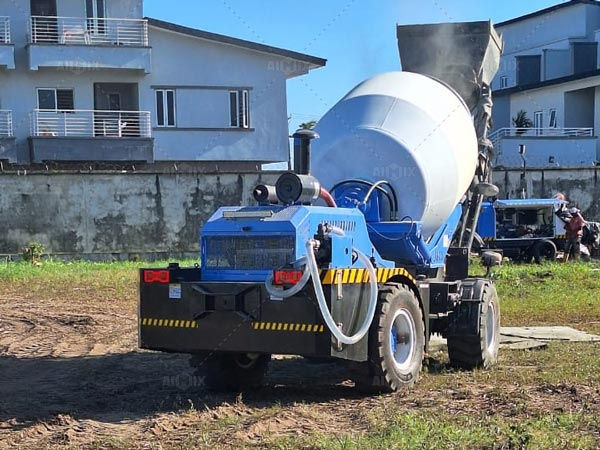Top 10 Concrete Mixer Price Trends in 2025: Capacity, Brands, and Bulk Discounts
- aimixglobal5
- May 7
- 2 min read
The concrete mixer market is evolving, influenced by various trends. In 2025, understanding these trends is crucial for buyers. This article explores the top 10 price trends, focusing on capacity, brands, and bulk discounts. Additionally, we'll look at self-loading concrete mixers and pricing in the Philippines and Kenya.
1. Increasing Demand for Self-Loading Concrete Mixers
These self loading mobile concrete mixers are gaining popularity due to their efficiency. They combine loading, mixing, and discharging functions. This reduces labor costs and improves project timelines. As demand rises, prices may see a slight increase. Buyers should consider the long-term savings these mixers offer.

2. Capacity and Its Impact on Pricing
Concrete mixer capacity significantly affects pricing. Larger capacity mixers can handle bigger projects but come at a higher cost. Buyers should assess their project needs to choose the right capacity. Balancing capacity with budget ensures efficient use of resources.
3. Brand Influence on Mixer Pricing
Brand reputation plays a vital role in concrete mixer pricing. Established brands often charge more due to reliability and support. However, lesser-known brands may offer competitive prices. Buyers should research brand history and customer reviews before purchasing.
4. Bulk Purchase Discounts
Bulk purchases can lead to significant discounts. Suppliers often provide better deals for larger orders. Buyers should consider pooling resources with other projects or companies. This strategy reduces costs and ensures a steady supply of mixers.
5. Concrete Mixer Price Trends in the Philippines
The Philippines sees diverse pricing trends due to local demand and import costs. Self-loading mixers are particularly popular. Buyers should explore local suppliers for competitive concrete mixer price Philippines. Importing mixers may involve higher costs due to tariffs.

6. Concrete Mixer Price Trends in Kenya
Kenya's construction sector is booming, influencing concrete mixer price in Kenya. Local production capabilities can offer cost advantages. Buyers should consider regional suppliers to avoid import costs. Understanding local market dynamics aids in finding budget-friendly options.
7. Technological Advancements
Technological advancements contribute to pricing changes. Mixers with advanced features often cost more. However, these features enhance efficiency and reduce operational costs. Buyers should weigh the benefits of technology against the initial investment.
8. Environmental Considerations
Environmental concerns are impacting the concrete mixer market. Eco-friendly mixers may come at a premium price. However, they can lead to long-term savings and compliance with regulations. Buyers should consider the environmental impact when making purchasing decisions.
9. Import and Export Dynamics
Import and export policies affect mixer prices globally. Tariffs and restrictions can increase costs for imported models. Buyers should stay informed about policy changes. This knowledge helps in planning and budgeting effectively.
10. After-Sales Support and Maintenance Costs
After-sales support and maintenance influence total ownership costs. Mixers with better support services may have higher upfront prices. However, they ensure long-term reliability and reduced downtime. Buyers should consider these factors when evaluating mixer prices.
Conclusion
The concrete mixer market in 2025 presents various pricing trends. Capacity, brand reputation, and bulk discounts are key factors. Additionally, regional differences in the Philippines and Kenya influence pricing. Buyers should assess these trends to make informed decisions. A strategic approach ensures efficient resource allocation and project success.






Comments